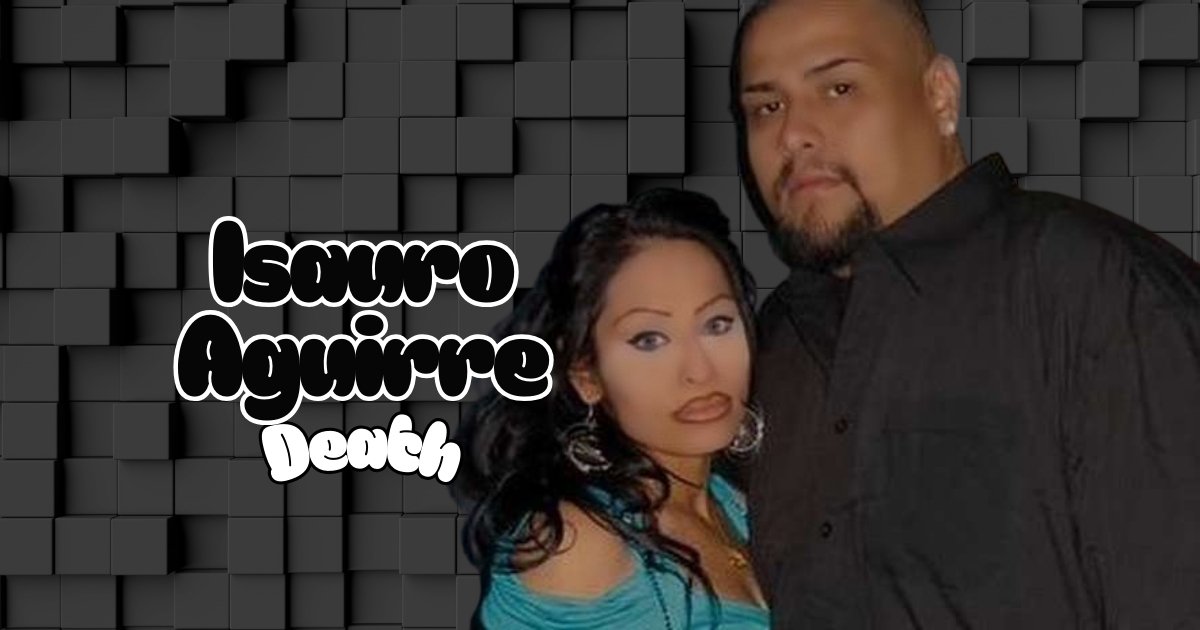The statistics are staggering. Every year, approximately 1,750 children die from abuse in the United States. Behind each number lies a story of unimaginable suffering. Few cases have captured America’s collective horror quite like that of eight-year-old Gabriel Fernandez, whose systematic torture and murder at the hands of his mother’s boyfriend, Isauro Aguirre, exposed the darkest corners of child cruelty and systemic failures in our protective systems.
Now, as Isauro Aguirre’s death looms on California’s death row, we face a profound question: Does his execution outcome represent justice served for Gabriel’s unspeakable suffering, or does it perpetuate a cycle of tragedy that fails to address the deeper wounds in our child welfare system?
This isn’t just about one man’s fate. It’s about how we as a society grapple with horrific physical abuse, navigate the complexities of capital punishment, and confront the institutional neglect that allowed an innocent child to slip through every safety net designed to protect him.
The Gabriel Fernandez Case: A Nation’s Horror
Gabriel Fernandez endured eight months of systematic torture that defies human comprehension. The Gabriel Fernandez case revealed layers of brutal child mistreatment that transformed a cheerful, loving boy into a victim of unrelenting cruelty.
The abuse escalated systematically. What began as verbal threats evolved into severe cruelty that included:
- Cigarette burns covering Gabriel’s body
- BB gun pellets shot at close range
- Forced to eat cat litter and feces
- Pepper spray attacks to his face and eyes
- Being locked in a small cabinet for hours
- Brutal beatings with baseball bats and belt buckles
Neighbors reported hearing Gabriel’s screams. Teachers noticed his declining health. Family members suspected the worst. Yet the horrific physical abuse continued unabated.
The final assault lasted three days. Gabriel’s suffering reached its peak when Aguirre and Pearl Fernandez subjected the child to a sustained attack that left him with a fractured skull, broken ribs, and internal bleeding. Gabriel never regained consciousness after the final beating in May 2013.
“The level of abuse was so severe that it’s difficult for people to comprehend how another human being could inflict such pain on a child.” – Los Angeles County prosecutor
Isauro Aguirre: The Man Behind the Monster
Isauro Aguirre wasn’t a stranger who randomly targeted Gabriel. He was Pearl Fernandez’s boyfriend, a man with a troubling criminal history who moved into the family home and systematically took control.
Aguirre’s Background:
- Previous domestic violence convictions
- History of anger management issues
- Unemployed with substance abuse problems
- Known for controlling and manipulative behavior
The execution outcome for Aguirre stems from his role as the primary perpetrator. Evidence showed he orchestrated most of the physical maltreatment, often forcing Pearl to participate or watch. His psychological profile revealed a dangerous combination of narcissism, sadism, and complete lack of empathy.
Court testimony revealed Aguirre’s twisted logic. He claimed Gabriel was “gay” and needed to be “toughened up.” This delusional justification for abuse trauma demonstrates the warped thinking that enabled months of escalating violence.
The Investigation That Revealed Systemic Breakdown
When paramedics arrived at the Palmdale apartment, they found Gabriel unconscious and covered in injuries. The initial police response quickly revealed this wasn’t an accident—it was attempted murder.
Key Investigation Findings:
| Evidence Type | Details |
| Physical Evidence | Fractured skull, broken ribs, BB pellets embedded in skin |
| Witness Testimony | Neighbors heard screaming, teachers noted decline |
| Digital Evidence | Text messages planning abuse, photos of injuries |
| Medical Records | Pattern of suspicious injuries over 8 months |
The investigation exposed oversight flaws at every level. Despite 60 reports to authorities, Gabriel remained in his abusive home. Social workers dismissed obvious warning signs. The child welfare system failed catastrophically.
The Trial That Gripped America
The prosecution’s case against Aguirre was overwhelming. Criminal justice complexities emerged as defense attorneys attempted to shift blame to Pearl Fernandez or claim mental illness. However, the evidence painted a clear picture of premeditated torture.
Trial Timeline:
- 2018: Trial begins with extensive media coverage
- March 2018: Jury selection faces challenges due to publicity
- June 2018: Guilty verdict on first-degree murder
- December 2018: Death sentence imposed
The death penalty debate intensified during sentencing. Prosecutors argued that the systematic torture of a defenseless child warranted capital punishment. Defense attorneys pleaded for life imprisonment, citing Aguirre’s troubled background.
The Death Penalty Debate: Closure or Further Trauma?
Supporters of Aguirre’s demise through lethal injection execution argue that some crimes are so heinous they demand the ultimate punishment. The Gabriel Fernandez case represents precisely the type of case that capital punishment was designed to address.
Key Arguments for Execution:
- Justice for Gabriel’s Suffering
- The abuse trauma was so severe that life imprisonment seems insufficient
- Gabriel’s torment demands proportionate punishment
- Society’s moral obligation to exact ultimate justice
- Deterrent Effect
- Capital punishment case may discourage similar crimes
- Sends clear message about society’s values
- Protects future potential victims
- Community Healing
- Justice execution provides closure for traumatized community
- Allows society to move forward from horrific tragedy
- Honors Gabriel’s memory through maximum accountability
Opposition to Aguirre’s Death Sentence
Critics of the execution outcome raise profound moral and practical concerns. The penalty law controversy extends beyond individual cases to fundamental questions about state-sanctioned killing.
Arguments Against Execution:
- Moral Considerations: State should not engage in killing, regardless of crime
- System Reliability: Risk of executing innocent people due to judicial challenges
- Family Impact: Gabriel’s siblings may suffer additional trauma
- Cost Analysis: Death penalty cases cost millions more than life sentences
The humane justice system debate questions whether execution truly serves justice or simply satisfies vengeance. Some argue that life imprisonment without parole achieves public safety goals without crossing moral boundaries.
Public Opinion on Child Killer Executions
American attitudes toward capital punishment vary significantly by region and demographics. However, child abuse cases like the Gabriel Fernandez case generate unique public responses.
Recent Polling Data:
| Support Level | Percentage | Demographics |
| Strong Support | 68% | Parents with young children |
| Moderate Support | 22% | General population |
| Opposition | 10% | Anti-death penalty advocates |
The court sentencing debate reveals sharp divisions. While most Americans support capital punishment for child killers, growing numbers question the death penalty’s effectiveness and morality.
Legal Challenges and Appeals Process
Isauro Aguirre’s death sentence triggers automatic appeals in California’s complex legal system. The execution ethics debate will continue through years of criminal justice complexities.
Appeals Timeline:
- 2019-2023: Automatic direct appeal
- 2024-2026: State habeas corpus petition
- 2027-2029: Federal habeas corpus review
- 2030+: Potential execution date (if appeals fail)
California’s moratorium on executions adds another layer to the execution protocol debate. Governor Gavin Newsom has halted all executions, meaning Aguirre’s demise may never occur regardless of legal outcomes.
The Systemic Failures: Beyond Aguirre’s Guilt
The Gabriel Fernandez case exposed catastrophic failures in Los Angeles County’s child welfare system. Despite 60 reports to authorities, Gabriel remained in his deadly home environment.
DCFS Failures Timeline:
| Date | Report | DCFS Response | Outcome |
| Oct 2012 | Teacher reports injuries | Cursory investigation | Case closed |
| Dec 2012 | Neighbor calls hotline | No follow-up visit | No action |
| Feb 2013 | School nurse documents burns | Brief home visit | Minimal intervention |
| May 2013 | Gabriel dies | Emergency response | Too late |
The DCFS criticism was swift and severe. Protective services framework proved inadequate for detecting and preventing child abuse tragedy. Social workers later faced criminal charges for their negligent child protection practices.
School System’s Role in Gabriel’s Tragedy
Gabriel’s teachers witnessed his transformation from happy child to withdrawn, injured victim. The child safety protocols failed at multiple levels within the educational system.
Warning Signs Observed:
- Frequent absences and tardiness
- Visible injuries and burns
- Dramatic personality changes
- Fear of going home
- Declining academic performance
Despite mandatory reporting requirements, the systematic oversight failures prevented effective intervention. Teachers made reports, but the child welfare system didn’t respond appropriately.
“Gabriel was crying for help every day, and we all failed him.” – Former teacher at Sumner Elementary
Community Warning Signs Ignored
The Fernandez’s abuse occurred in plain sight. Neighbors, family members, and community members witnessed Gabriel’s suffering but couldn’t navigate the complex protective services framework to save him.
Community Response Failures:
- Neighbors heard screaming but felt powerless
- Family members feared retaliation for reporting
- Cultural barriers prevented intervention
- Lack of anonymous reporting mechanisms
The bystander effect played a crucial role. People assumed someone else would act, or that authorities were already involved. This institutional neglect created a perfect storm of inaction.
Reform Efforts Following Gabriel’s Death
Gabriel’s death sparked immediate calls for child welfare reform. California implemented sweeping changes to prevent future tragedies.
Major Reforms Implemented:
- Legislative Changes
- Enhanced mandatory reporting requirements
- Increased penalties for social worker negligence
- Improved funding for child advocacy programs
- System Improvements
- Better training for DCFS workers
- Technology upgrades for case tracking
- Enhanced inter-agency communication
- Community Programs
- Public awareness campaigns
- Anonymous reporting hotlines
- Community-based prevention initiatives
The welfare overhaul represents the most comprehensive child protection changes in California history. However, critics argue that systemic shortcomings persist despite these reforms.
FAQ’s
Q1: What was Isauro Aguirre sentenced to death for?
A: Murdering 8-year-old Gabriel Fernandez through months of systematic torture and abuse.
Q2: Has Isauro Aguirre been executed yet?
A: No. He remains on California’s death row with ongoing appeals.
Q3: How did the Gabriel Fernandez case expose system failures?
A: Despite 60 reports to authorities, child protective services failed to remove Gabriel from his abusive home.
Q4: What reforms happened after Gabriel’s death?
A: California enhanced mandatory reporting, improved DCFS training, and increased child protection funding.
Q5: Why is there debate about Aguirre’s death sentence?
A: Some see execution as justified for child torture; others prefer life imprisonment over state-sanctioned killing.
Final Thoughts
The distinction between justice and vengeance becomes blurred in cases involving horrific physical abuse of children. Isauro Aguirre’s death sentence raises fundamental questions about what true justice means.
Legal justice seeks proportionate punishment that serves multiple purposes: retribution, deterrence, rehabilitation, and public safety. The execution outcome for Aguirre addresses retribution and potentially deterrence, but it cannot restore Gabriel’s life or heal the community’s wounds.
Jamal Morton Net Worth 2025: Age, Wife, Career










